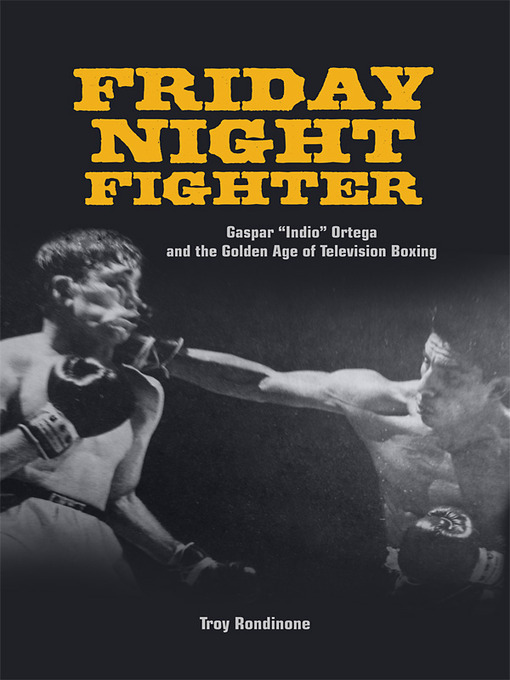Friday Night Fighter relives a lost moment in American postwar history, when boxing ruled as one of the nation's most widely televised sports. During the 1950s and 1960s, viewers tuned in weekly, sometimes even daily, to watch widely recognized fighters engage in primordial battle; the Gillette Cavalcade of Sports Friday Night Fights was the most popular fight show. Troy Rondinone follows the dual narratives of the Friday Night Fights show and the individual story of Gaspar "Indio" Ortega, a boxer who appeared on prime-time network television more than almost any other boxer in history. From humble beginnings growing up poor in Tijuana, Mexico, Ortega personified the phenomenon of postwar boxing at its greatest, appearing before audiences of millions to battle the biggest names of the time, such as Carmen Basilio, Tony DeMarco, Chico Vejar, Benny "Kid" Paret, Emile Griffith, Kid Gavilan, Florentino Fernández, and Luis Manuel Rodriguez.
Rondinone explores the factors contributing to the success of televised boxing, including the rise of television entertainment, the role of a "reality" blood sport, Cold War masculinity, changing attitudes toward race in America, and the influence of organized crime. At times evoking the drama and spectacle of the Friday Night Fights themselves, this volume is a lively examination of a time in history when Americans crowded around their sets to watch the main event.
| Cover Title Page Copyright Contents Illustrations Acknowledgments Preface: Boxing Lessons Introduction: Fight Night Part I. Gladiators of the Age of Contentment Chapter 1. "And the Winner—Television!" Chapter 2. "The Regular Friday Coaxial Bloodbath" Chapter 3. The Friday Night Fighters Part II. Indio Chapter 4. The Mexamerican Chapter 5. The Discovery of New York Chapter 6. Climb Chapter 7. The Tournament Chapter 8 .The Secret Government Chapter 9. Trouble Chapter 10. The Shot Part III. The Hardest Game Chapter 11. Bloodying the Sport Chapter 12. The Ship Goes Down Chapter 13. Changing Times Epilogue: Nightmares A Note on Sources Notes Index |"Troy Rondinone's history of television's first go-round with boxing is outstanding in every respect. Twinning it with the riveting life story of the popular veteran of 200 or so pro fights was inspired."—Cyber Boxing Zone"A superior piece of sports history. . . . Friday Night Fighter is not only a lively historical analysis of boxing, it is consistently perceptive, avoids sentimentality, and yet is reassuringly sympathetic. . . . A treasure trove."—Journal of Sport History
"Rondinone unearths two important histories. . . . He writes with a nostalgic eye, using sparkling prose,and he culls from diverse sources."—The Journal of American History
| Troy Rondinone is an associate professor of history at Southern Connecticut State University and the author of The Great Industrial War: Framing Class Conflict in the Media, 1865-1950.

